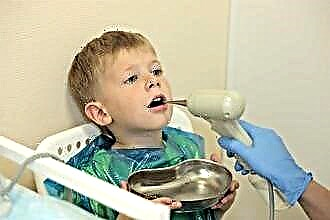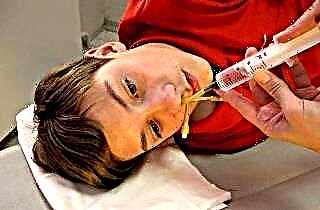Young mothers start to sound the alarm as soon as they notice that the baby's nose is running. Of course, children's health should be monitored and alarming symptoms should not be ignored. But if the discharge from the nose is transparent and very liquid, then this is far from always talking about the onset of the disease. And even if they are of an infectious nature, it is quite easy to cure them at this stage. The main thing is to correctly determine the cause.
The smallest
 The smallest children have an abundant transparent runny nose much more often than adults and even preschool children. Their mucous membranes are very delicate, easily irritated and react quickly to any negative environmental impact. In most cases, such snot is not infectious in nature and may not cause much concern to parents.
The smallest children have an abundant transparent runny nose much more often than adults and even preschool children. Their mucous membranes are very delicate, easily irritated and react quickly to any negative environmental impact. In most cases, such snot is not infectious in nature and may not cause much concern to parents.
Liquid transparent snot in an infant most often appears simultaneously with swelling of the gums. As the mothers say - "to the teeth". This process is quite unpleasant and painful for the child. All children react to it in different ways, but most go through the following symptoms:
- severe anxiety;
- temperature increase;
- sleep disturbance;
- profuse salivation;
- swollen gums.
Therefore, if a baby has similar symptoms, the baby will have to endure liquid snot. They will disappear on their own as soon as the teeth erupt.
 Drug treatment in this case does not help in any way. Only with a strong increase in temperature do you have to give antipyretics. The nose needs to be very carefully cleaned of mucus several times a day, you can rinse with saline and lubricate the nostrils with baby cream to relieve irritation.
Drug treatment in this case does not help in any way. Only with a strong increase in temperature do you have to give antipyretics. The nose needs to be very carefully cleaned of mucus several times a day, you can rinse with saline and lubricate the nostrils with baby cream to relieve irritation.
Also, in infants, abundant nasal discharge of a non-infectious nature occurs with a sharp change in temperature or with hypothermia. This is especially noticeable during a walk in the cold season - as soon as the baby freezes, his nose begins to "leak". This means that it is time to go home or you need to wrap up the child warmly. Otherwise, it's not far from the cold.
Allergic reaction
One of the most common reasons why snot flows like water in a child of any age (from infants to adolescents) is severe allergic reactions. They usually stop quickly as soon as contact with the allergen is interrupted. You can independently determine their nature by the following symptoms:
 inflamed conjunctiva of the eyes;
inflamed conjunctiva of the eyes;- increased tearing;
- visible swelling of the face;
- labored breathing;
- uneven redness of the skin;
- rashes are possible.
The body signals an allergy especially clearly if similar symptoms occur in the same environment or in repetitive situations. Moreover, an allergen can be anything: from pet hair to certain foodstuffs. And quite often only an allergist can find it after a number of laboratory tests.
If a child has an increased tendency to allergies, then antihistamines must be at hand: children's "Diazolin", "Tavegil", "Zirtek", "Astemizol" and others.
Only a doctor should choose antiallergic drugs for a baby. Each of the drugs has its own characteristics and contraindications, which must be taken into account. The correctly chosen medicine will quickly relieve allergies, and the flow from the child's nose stops.
Infectious snot
The most disturbing reason why transparent snot flows like water in a child is the ingress of pathogenic microorganisms into the upper respiratory tract. These can be viruses, bacteria, or fungi. They irritate the delicate mucous membrane, provoke the onset of the inflammatory process and force the immune system to work actively. Abundant discharge in this case is the body's primary defense reaction - a signal of the onset of the disease.

Indicative symptoms are:
- increased excitability or vice versa - drowsiness;
- general weakness, child's refusal to play;
- redness of the throat, pain when swallowing;
- headaches, dizziness;
- a sharp decrease in appetite;
- change in body temperature.
 Mothers need to remember that illness is not always accompanied by a sharp or strong increase in body temperature. This usually happens in children with good immunity or with dangerous infections (whooping cough, measles, rubella, etc.). At the initial stage of the disease, the temperature can be kept in the range of 37, .2-37.5 0C and it is not always visible. And in children with weakened immunity, it sometimes decreases to 35.6-35.8 0WITH.
Mothers need to remember that illness is not always accompanied by a sharp or strong increase in body temperature. This usually happens in children with good immunity or with dangerous infections (whooping cough, measles, rubella, etc.). At the initial stage of the disease, the temperature can be kept in the range of 37, .2-37.5 0C and it is not always visible. And in children with weakened immunity, it sometimes decreases to 35.6-35.8 0WITH.
A very characteristic signal that an infection is present in the body is a change in the color and consistency of mucous discharge from the nose. If at first the liquid flows from the child's nose like water, then by 2-3 days the snot thickens, becomes viscous and changes its color to yellow or yellow-green. This clearly indicates the bacterial nature of the disease and the need for the use of antimicrobial drugs.
In no case should you prescribe antibiotics to children yourself. These are drugs that, if used incorrectly, can cause a number of serious side effects and even affect the further development of the child and the formation of his organs and systems.
Therefore, if there is even the slightest suspicion that the child has "caught the virus", immediately consult a doctor.

 inflamed conjunctiva of the eyes;
inflamed conjunctiva of the eyes;

